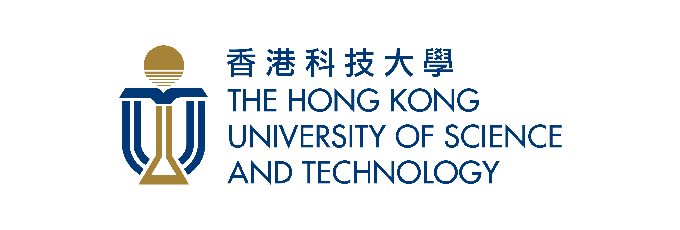You’ve seen it in “Star Trek” and “The Six Million Dollar Man”. Now, Professor Zhiyong Fan and his PhD research team at the Department of Electronic and Computer Engineering (ECE), Hong Kong University of Science and Technology (HKUST) have invented the world’s first artificial 3D eyeball.
His research paper — co-written with scientists from the University of California, Berkeley, and the Lawrence Berkeley National Laboratory — was published in the journal Nature in May. In their findings, the researchers highlight biological eyes as one of the most important sensing organs for most animals on the planet as it is responsible for acquiring over 80% of the information from our surroundings.
This successful breakthrough in mimicking artificial vision systems by HKUST spells great potential in robotics and visual prostheses. “I came up with the idea to use nanowires and external electronic circuitry to enable high-density sensors on a curved surface. The resulting biomimetic eye prototype, with distance among sensing rods minimised to three micrometres, has 30 times more sensors on the artificial retina than the real human eye,” Fan said.
Opportunities for collaborations and guidance
HKUST attracts talents from all walks of life and ensures that every deserving applicant gets the financial, technical, and social support they need. The best part? They also get to work with renowned faculty members like Fan.

Source: HKUST, Department of Electronic and Computer Engineering
Swapnadeep Poddar, who came from India to carry out his PhD research under Fan, was responsible for demonstrating that an artificial eye can obtain higher image resolution than the human eye. To this end, he fabricated ultra-small pixels using the focused ion beam technique. He, therefore, played a key role in creating a high-density array of nanowires that mimic photoreceptors on a human retina.
“Each such pixel contained a single nanowire enabling the exploration of a single-nanowire-based electrochemical retina performance. To further demonstrate the flexibility of the design, I also fabricated pixels with four nanowires using the same focused ion beam technique,” he explained.
Sri Lankan PhD candidate Lakshita Prabath Wijesinghe has always been inspired by the brain. Taking an engineering perspective, he chose to focus his PhD research on developmental robotics. “HKUST provides a well-suited atmosphere to investigate the functionalities of the brain, with a lot of opportunities for collaboration and guidance,” he shared.
Wijesinghe is currently involved in developing a self-supervised deep learning model based on how bats self-calibrate their echolocation systems. Not only does this generate testable predictions, but it also has significant ramifications in the design of robots that can match the robustness of biological systems. This research is a collaboration between Professor Bertram Shi and a neuroscientist at the Johns Hopkins University in the US.

Source: HKUST, Department of Electronic and Computer Engineering
Wijesinghe got his break at HKUST through the Hong Kong Fellowship Scheme (HKPFS), which provides him with the freedom to perform his study. The HKPFS draws the most promising doctoral students from all over the world to complete their PhD research in Hong Kong.
Scholars receive an attractive PhD stipend, travel benefits and technical support throughout their three or four years of study. This affords them peace of mind to focus on their work as well as distinct opportunities to expand their work on the global stage. “The HKPFS positioned me among a unique set of peers that I value to this day; I consider myself privileged to be in that group,” he said.
Fellow HKPFS scholar Jeffry Wicaksana from Indonesia concurs. “Being an HKPFS scholar makes me think more about my topic of research interest and gives me positive pressure to perform well. Besides providing financial and technical support, it also opens doors for me in my study,” he said.
Wicaksana had his sights set on HKUST since he was in middle school. After graduating with top honours from HKUST with his Bachelor’s degree, he had multiple opportunities to go elsewhere for graduate school. However, he chose to remain and work on developing point of care medical devices, due to the excellent research environment provided by the university and the strong support of the HKPFS. “Pursuing my PhD explores potential directions towards achieving the vision I had, by providing me access to the right people, knowledge, and tools,” he said.

Source: HKUST, Department of Electronic and Computer Engineering
HKUST: Where scientists become innovators
Poddar, Wijesinghe and Wicaksana are among the budding scientists developing revolutionary creations at HKUST’s ECE department. The university is well-reputed for turning curious minds into creative problem-solvers who go on to transform the landscape of their chosen industry.
As for the “superhuman eye,” it can already be employed in humanoid medical robots. In the next five years, Fan and his team will work on making the artificial eye biocompatible with the human system. Then, they will carry out clinical trials to bring this technology to the millions of visually-challenged people across the globe.
“With the advent of robotics and nanotechnology, tasks that were once impossible to achieve by humans have become achievable today with greater precision and accuracy. There is a huge room for prospective students to explore this at HKUST. With its beautiful seaside campus, cutting-edge facilities, friendly staff, and supportive teachers, it is a dream place to do research,” Poddar said. Now, you too could bring your ideal PhD research to life at this leading Asian university via the Hong Kong Fellowship Scheme.
Follow HKUST on Facebook, Twitter, Instagram, and YouTube
Liked this? Then you’ll love these…
Electronic & electrical engineering: APAC’s spark of innovation












